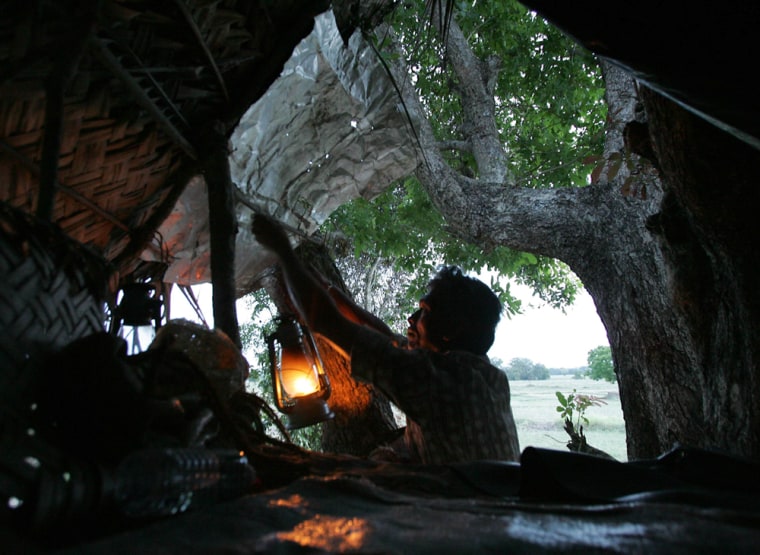Sweating nervously in the jungle heat, Sri Lankan ranger Mahesh Pahalage peers warily through dense undergrowth at a towering elephant’s swishing trunk and gestures silently to a camouflaged colleague.
Unusually tense for an experienced tracker, Pahalage is among three teams of wildlife officers fanning across this 900-acre manmade teak forest in central Sri Lanka armed with shotguns. They are not hunting for poachers.
Wild elephants have trampled nine villagers to death here this year alone and angry farmers threatened to annihilate the entire herd. So alarmed authorities have decided to drive 120 elephants to a national park -- using firecrackers and guns.
“Its going to charge!” yelled Pahalage, lighting a firecracker with trembling hands. A burst of orange light, a deafening bang, and the elephant disappears into the foliage at the speed of the rangers’ rusty Land Rover.
“We’ve had a lot of complaints from residents here. They fear for their lives,” added Pahalage. “We’re going to herd these elephants along a 45-mile stretch to the Wilpattu National Park.”
As one team of rangers slowly advances each evening, another follows behind and erects a temporary electric fence to stop the animals from backtracking.
Dozens shot dead each year
Hundreds of Sri Lanka’s 3,500-strong elephant population are straying into human areas in search of food and water because of deforestation and cyclical droughts. Each year, 150 to 160 elephants are shot dead or poisoned by angry farmers.
“Frankly, I don’t see why people should be bothered about the welfare of these animals,” said 61-year-old farmer R.P. Bilinda, who had to rebuild his home in a little village hidden away in the jungle twice after elephants flattened it.
Bilinda and fellow farmers spend their nights in tree houses overlooking their cucumber, watermelon and bitter gourd crops, constantly on the lookout for trampling elephants.
“For years we wanted the wildlife people to do something about the elephants,” Bilinda said. “We are so happy they are taking these pests somewhere else.”
Catching a single rogue elephant and transporting it in a special truck to a game reserve away from human habitation has proved to be a costly exercise for Sri Lanka’s Department of Wildlife.
“Herding the entire lot to the national park is the best option. It’s cost effective and it’s in the best interest of the farmers and the animals,” said Dayananda Kariyawasam, Director General of the department.
Fence to be built at park
Once the herd has reached the park in September, the department will erect an “elephant friendly” electric fence along its southern borders to prevent the animals from wondering out into villages again.
Elephant numbers in Sri Lanka have fallen sharply over the past century. There were about 12,000 elephants in Sri Lanka in 1900, but numbers plummeted because of the ivory trade under British rule.
Ivory poaching is rare now, and very few of Sri Lanka’s Asian elephants -- which are smaller than their African cousins and have smaller ears -- have tusks.
